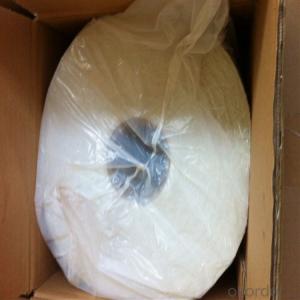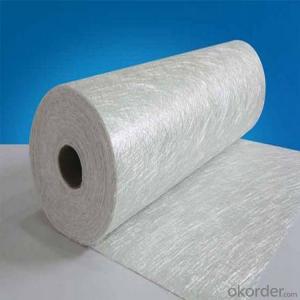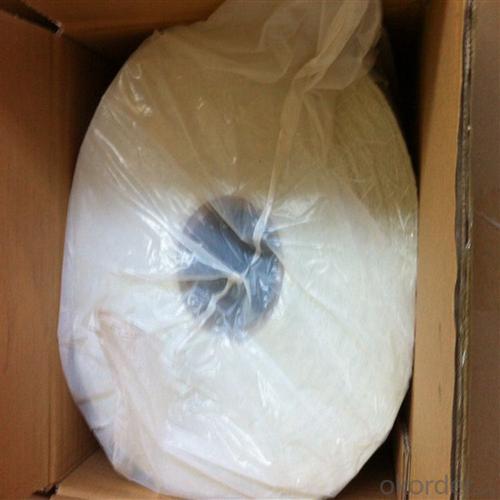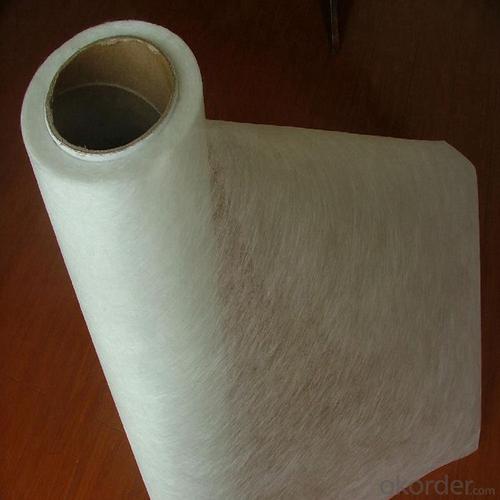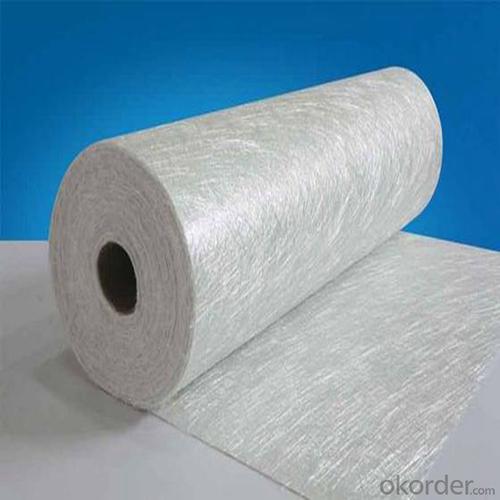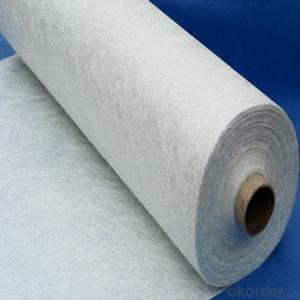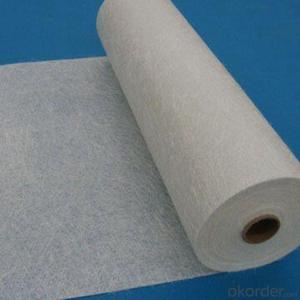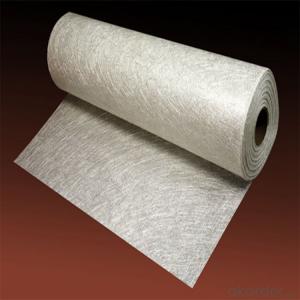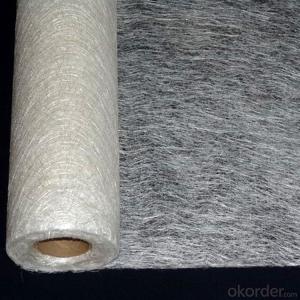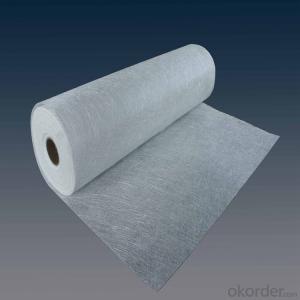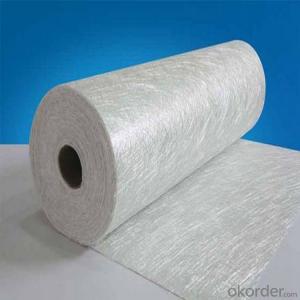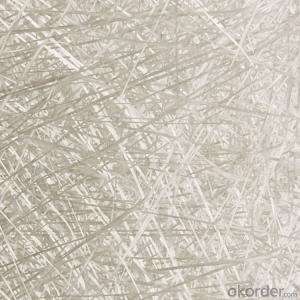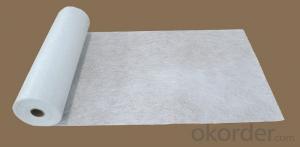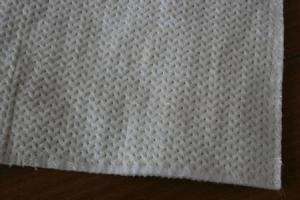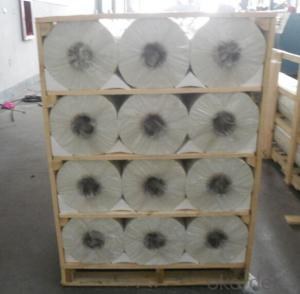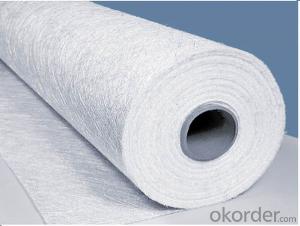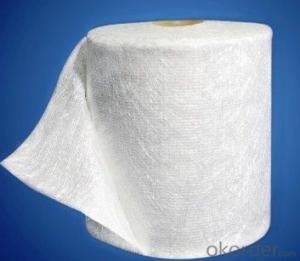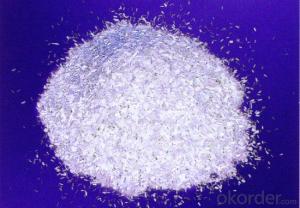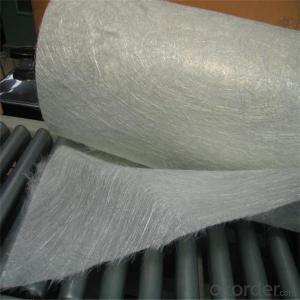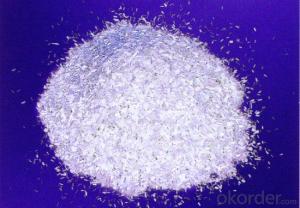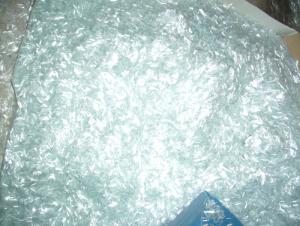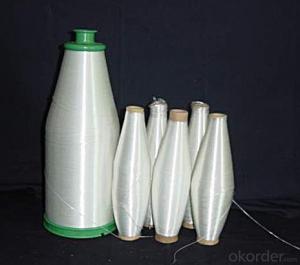Fiberglass Chopped Strand Mat for FRP Pipe / Heated Floor Mat
- Loading Port:
- China main port
- Payment Terms:
- TT OR LC
- Min Order Qty:
- 50 kg
- Supply Capability:
- 10000 kg/month
OKorder Service Pledge
OKorder Financial Service
You Might Also Like
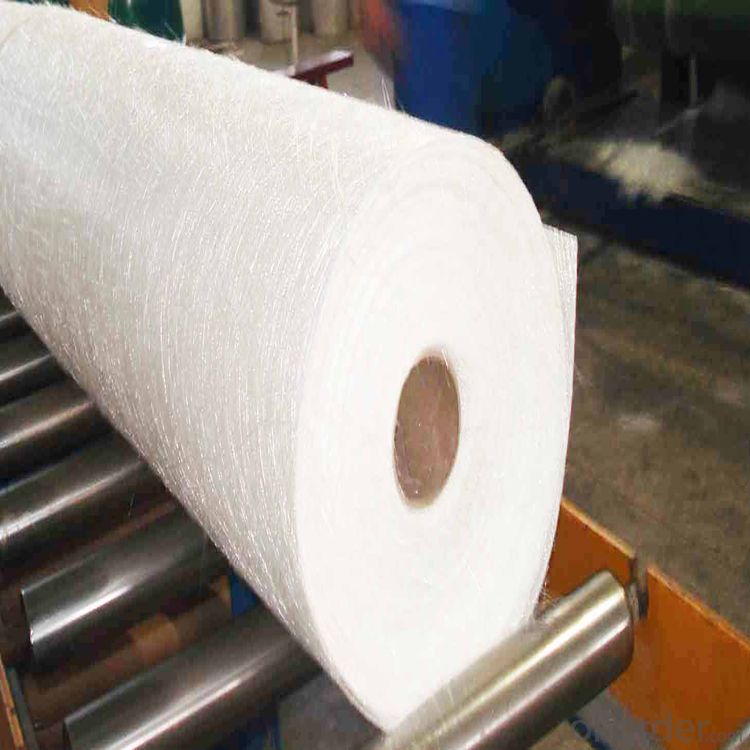
Product Description:
Chopped strand mat is made from chopped glass fibers, which are bonded with powder or emulsion binders. It can be used in hand lay-up process and continuous laminating process to produce FRP products, such as plates, lighting board, hull, bathtub, cooling towers, anti-corrosion materials, vehicles.
Features:
Uniform thickness, softness and hardness good.
Good compatibility with resin, easy completely wet-out.
Fast and consistent wet-out speed in resins and good manufacturability.
Good mechanical properties, easy cutting.
Good cover mold, suitable for modeling complex shapes.
Application:
fiberglass thickness is suitable for application by hand lay-up, reinforce and machine FRP molding,
including interior decoration of vehicles, boat hulls, complete set of sanitary equipment, anticorrosive pipes, tanks, building materials, tables, chairs, panels and all kind of composite FRP products.
Specifications:
Item | Over Density | Moisture Content | Chop Density | Polyester Yarn | Width |
(g/m2) | (%) | (g/m2) | (g/m2) | (mm) | |
EMK300 | 309.5 | ≤0.15 | 300 | 9.5 | 50-3300 |
EMK380 | 399 | 380 | 19 | ||
EMK450 | 459.5 | 450 | 9.5 | ||
EMK450 | 469 | 450 | 19 | ||
EMC0020 | 620.9 | 601.9 | 19 | ||
EMC0030 | 909.5 | 900 | 9.5 |
Special products are available according to customer’s requirement.
Product Packaging:
Each Surface Tissue is wound onto a paper tube which has an inside diameter of 76mm and the mat roll has a diameter of 330mm. The mat roll is wrapped up with plastic film,and then packed in a cardboard box or wrapped up with kraft paper. The rolls can be vertically or horizontally placed. For transportation, the rolls can be loaded into a cantainer directly or on pallets.

Product Storage:
Unless otherwise specified, Chopped Strand Mat should be stored in a dry, cool and rain-proof area. It is recommended that the room temperature and humidity should be always maintained at 15℃~35℃ and 50%~75% respectively.
Company Information
CNBM (China National Building Material) Group is the largest comprehensive building materials group in China that in integrate scientific research, manufacturing and logistics into one entity. The largest building materials and equipment specialists in China. Upon State Council approval, today CNBM owned more than 300 subordinate manufacturing factories and servicing companies. There are 6 fully owned public listed companies and 11 partially owned with substantial shares public listed companies. In many of these fields, CNBM is playing the leading role in the building industry in the country.
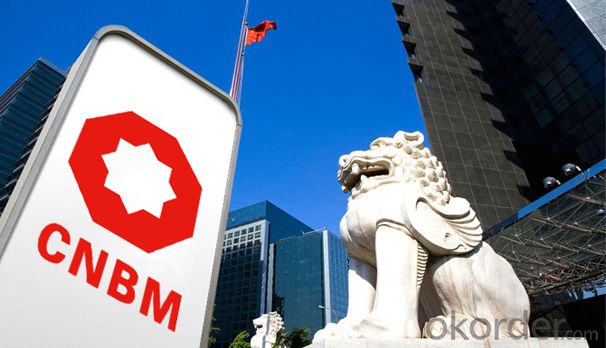
Order Information
Ordering please specify:
1. the product code, 2. weight, 3. width, 4. order quantity, 5. packaging, 6. special requirements please specify.
FAQ:
1. How long will you get reply?
Any inquiry will be replied within 24 hours. Usually we will reply within 12 hours.
2. How long is warranty period?
We provide 3 year warranty period.
3. What is your MOQ?
Any order quantity is available.
4. Can you provide sample?
Yes, samples are in stock. we can offer free sample for you.
5. Payment terms?
We can accept L/C, T/T, Western Union, Paypal etc.
6. Do you offer OEM service?
Yes, we can print customers’ logo on the packaging;
And the size and specification can be produced and design according to your demand.
7. What is the Production Lead Time?
15-20 days for bulk production after confirm the order.
- Q: Is fiberglass chopped strand suitable for the production of water slides?
- Fiberglass chopped strand, indeed, proves to be a fitting material for the production of water slides. Widely used in the manufacturing of such slides, fiberglass stands out as a versatile and durable substance. Its commendable attributes include a high strength-to-weight ratio, resistance to corrosion, and the ability to withstand harsh weather conditions. Specifically engineered for reinforcement purposes, fiberglass chopped strand emerges as an optimal selection for crafting robust and enduring water slides that can endure constant exposure to water, UV rays, and the inevitable wear and tear associated with regular usage. Moreover, fiberglass possesses the capability to be molded into diverse shapes and sizes, thus enabling the creation of intricate and personalized designs for water slides. As a whole, fiberglass chopped strand encompasses the essential properties and performance necessary for the production of water slides, rendering it an apt choice for this particular application.
- Q: Does fiberglass chopped strand have any water absorption properties?
- Fiberglass chopped strand does not have any water absorption properties. This is because fiberglass is made from inorganic materials, such as glass fibers, which do not readily absorb water. Additionally, the manufacturing process often includes the use of binders or coatings that further reduce water absorption. As a result, fiberglass chopped strand is commonly used in applications where resistance to moisture and water is required, such as in the construction of boats, automotive parts, and roofing materials.
- Q: What are the typical thermal expansion properties of chopped strand composites?
- The typical thermal expansion properties of chopped strand composites can vary depending on the specific materials used and the manufacturing process. However, in general, chopped strand composites tend to have lower thermal expansion coefficients compared to traditional materials such as metals. Chopped strand composites are made by combining reinforcing fibers, such as fiberglass or carbon fibers, with a polymer matrix, such as epoxy or polyester. The fibers provide strength and stiffness to the composite, while the matrix holds them together and protects them from external factors. The thermal expansion properties of chopped strand composites are primarily influenced by the thermal expansion coefficients of the fibers and the matrix material. Fiberglass, for example, has a relatively low thermal expansion coefficient, which means it expands and contracts less with changes in temperature. This can make chopped strand composites more dimensionally stable compared to materials like metals, which have higher thermal expansion coefficients. Additionally, the polymer matrix used in chopped strand composites can also affect their thermal expansion properties. Different types of polymers have varying thermal expansion coefficients, and the specific matrix material chosen can be tailored to optimize the composite's overall performance and thermal expansion characteristics. Overall, chopped strand composites tend to exhibit lower thermal expansion properties compared to metals, making them suitable for applications where dimensional stability is important. However, it is important to note that the exact thermal expansion properties can vary depending on the specific materials and manufacturing processes used, so it is necessary to consult the manufacturer or technical specifications for precise information.
- Q: Is fiberglass chopped strand compatible with different coating methods?
- Indeed, different coating methods are compatible with fiberglass chopped strand. This reinforcement material is frequently employed in a range of coating processes, including, but not limited to, resin infusion, pultrusion, hand lay-up, and spray-up. Typically, the chopped strands are combined with a liquid resin to create a composite material that can be applied to a surface through the chosen coating method. The versatility of fiberglass chopped strand, thanks to its compatibility with different coating methods, makes it an invaluable asset to industries such as automotive, construction, aerospace, and marine.
- Q: What are the typical processing challenges when using fiberglass chopped strand composites?
- There are several common processing challenges that may arise when using fiberglass chopped strand composites. One of the main challenges is ensuring consistent dispersion of the fibers throughout the composite material. Due to the short lengths of the fibers, it can be difficult to evenly distribute them within the resin matrix. This can result in areas with low fiber content, leading to reduced mechanical properties and potential weaknesses in the final product. Another challenge is managing the processing temperature. Fiberglass chopped strand composites typically require higher temperatures compared to other materials. This poses challenges in terms of selecting suitable processing equipment and maintaining the temperature within the optimal range throughout the manufacturing process. Failure to control the temperature can result in poor resin flow, incomplete curing, or even degradation of the fibers. Moreover, the abrasive nature of fiberglass can cause increased wear and tear on processing equipment. The sharp edges of the chopped fibers can lead to excessive wear on molds, dies, and other components of the production machinery. Regular maintenance and replacement of parts are necessary, adding to the overall complexity and cost of the manufacturing process. Additionally, handling and storing chopped strand composites can be challenging. The fibers are prone to breakage and tangling, making it difficult to handle and feed them into the processing equipment. Proper storage conditions, such as maintaining low humidity levels, are crucial to prevent moisture absorption by the fibers, which can negatively impact their performance and adhesion to the resin matrix. Lastly, achieving consistent and reliable bonding between the fibers and the resin matrix can be a challenge. The short lengths of the chopped fibers make it more difficult to establish a strong bond, resulting in reduced mechanical strength and potential delamination issues in the final product. Special attention must be given to the resin formulation and processing parameters to ensure optimal adhesion between the fibers and the matrix. In conclusion, fiberglass chopped strand composites offer numerous advantages, but they also present several processing challenges that require careful attention to achieve high-quality and reliable end products.
- Q: Can fiberglass chopped strand be used in automotive interior components?
- Automotive interior components can indeed utilize fiberglass chopped strand. This versatile material presents numerous advantages for automotive applications. Notably, its lightweight nature aids in reducing overall vehicle weight and enhancing fuel efficiency. Moreover, fiberglass chopped strand exhibits exceptional strength and stiffness, rendering it suitable for structural elements like seat frames, door panels, and dashboard supports. In addition, the molding of fiberglass chopped strand into intricate shapes is easily achievable, facilitating the creation of elaborate interior designs and features. Its resistance to chemicals, heat, and UV radiation further ensures long-lasting durability within automotive environments. Furthermore, the combination of fiberglass chopped strand with other materials, such as resins, allows for the enhancement of its performance characteristics. This enables customization and optimization of material properties to meet specific requirements for automotive interior components. In conclusion, fiberglass chopped strand proves to be a viable option for automotive interior components due to its lightness, strength, moldability, and durability.
- Q: Can fiberglass chopped strand be used for reinforcing concrete?
- Fiberglass chopped strand is indeed suitable for reinforcing concrete. It comprises glass fibers that are chopped into shorter lengths and incorporated into the concrete mix. By doing so, these fibers effectively amplify the concrete's overall robustness, longevity, and crack resistance. Moreover, they contribute to managing shrinkage and minimizing crack formation. In addition to being lightweight, fiberglass chopped strand boasts corrosion resistance and outstanding performance in challenging surroundings. Consequently, it is frequently employed in various concrete applications such as slabs, walls, precast elements, and shotcrete.
- Q: Can fiberglass chopped strand be used in the production of boat hulls?
- Yes, fiberglass chopped strand can be used in the production of boat hulls. Fiberglass chopped strand is a type of reinforcement material that is commonly used in composite materials, including boat hulls. It is made up of small fibers of glass that are randomly chopped into short lengths and then mixed with a resin to create a strong and durable composite material. When used in boat hull production, fiberglass chopped strand helps to provide strength, stiffness, and impact resistance to the hull, making it suitable for withstanding the harsh conditions of marine environments. Additionally, fiberglass chopped strand can be easily molded into complex shapes, allowing boat manufacturers to create hulls with specific designs and features. Overall, fiberglass chopped strand is a commonly used and effective material in the production of boat hulls.
- Q: Is fiberglass chopped strand compatible with vinyl chloride resin?
- Yes, fiberglass chopped strand is compatible with vinyl chloride resin. Fiberglass chopped strand is commonly used as a reinforcement material in the production of composites, and vinyl chloride resin is a type of thermoplastic resin that is often used as a matrix material in composite manufacturing. Fiberglass chopped strand is designed to adhere and bond well with various resin systems, including vinyl chloride resin. This compatibility ensures good mechanical properties and overall performance of the final composite product. Therefore, fiberglass chopped strand can be effectively used in combination with vinyl chloride resin to create strong and durable composites.
- Q: Can fiberglass chopped strand be used in chemical resistant applications?
- Typically, fiberglass chopped strand is not used in applications that require chemical resistance. Although fiberglass is renowned for its strength and durability, it does not possess inherent resistance to various chemicals. Instead, in situations where chemical resistance is necessary, it is common to employ alternative materials like specialty resins or coatings that are specifically engineered to withstand particular chemicals. These materials offer superior chemical resistance and safeguard against corrosion or deterioration caused by exposure to harmful substances. Consequently, it is advisable to explore alternative materials that are tailored to meet the chemical resistance demands of the application.
Send your message to us
Fiberglass Chopped Strand Mat for FRP Pipe / Heated Floor Mat
- Loading Port:
- China main port
- Payment Terms:
- TT OR LC
- Min Order Qty:
- 50 kg
- Supply Capability:
- 10000 kg/month
OKorder Service Pledge
OKorder Financial Service
Similar products
Hot products
Hot Searches
Related keywords
